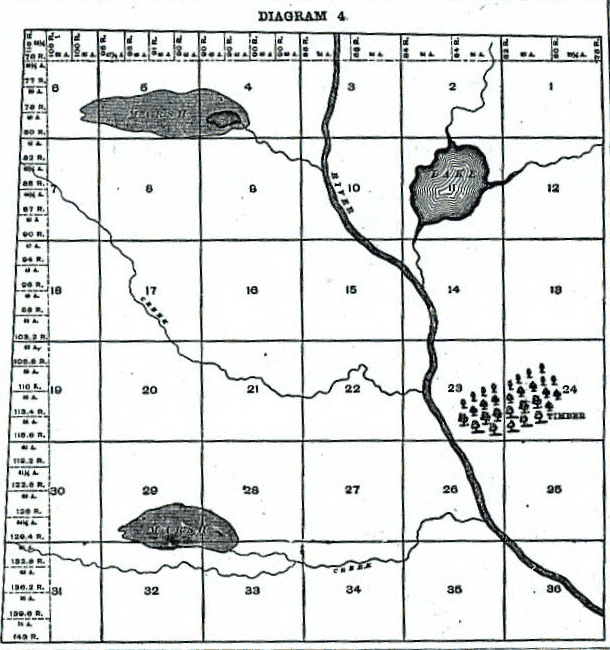| Each Township, unless it is one of the exceptional cases
referred to, is divided into 36 squares, which are called Sections.
These Sections are intended to be one mile, or 320 rods, square and contain
640 acres of land. Sections are numbered consecutively from 1 to
36, as shown on Diagram 4. Beginning with Section 1 in the Norteast
Corner, they run West to 6, then East to 12, then West to 18, and so on,
back and forth, until they end with Section 36 in the Southeast Corner.
Diagram 4 shows a plat of a Township as it is divided and platted by
the government surveyors. These Townships are called Government Townships
or Congressional Townships, to distinguish them from Civil Townships or
organized Townships, as frequently the lines of organized Townships do
not conform to the Goverment Township lines. |
 |
